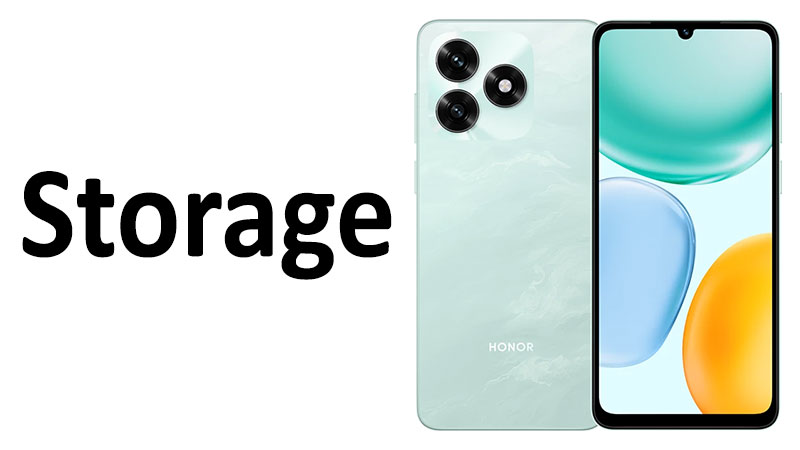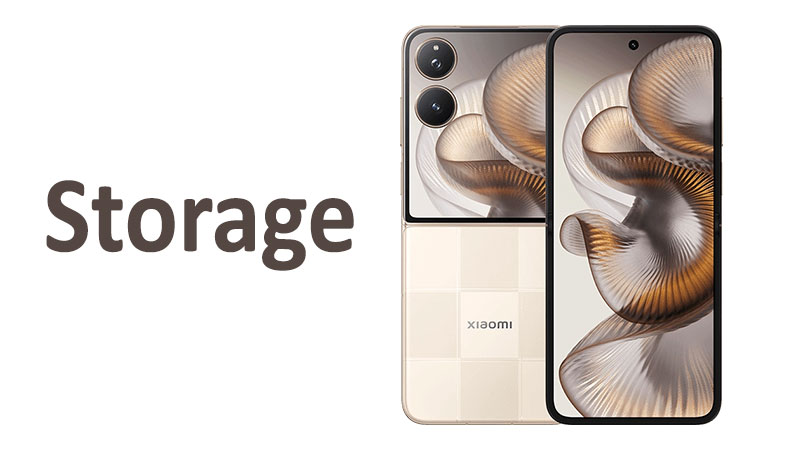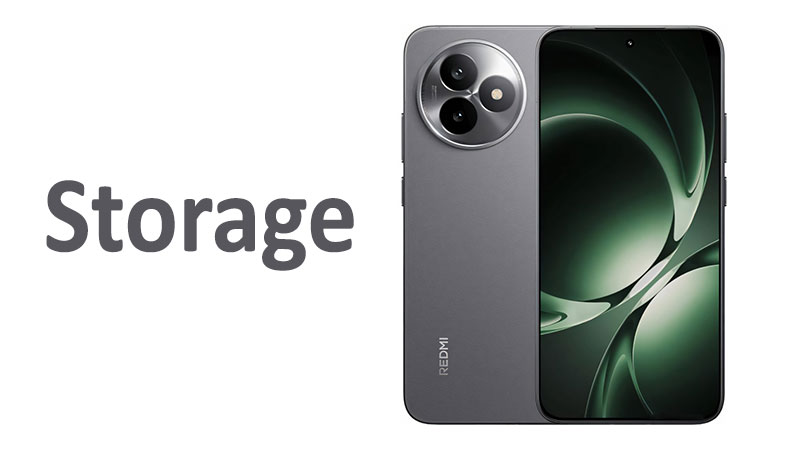Honor X5c storage capacity and type are critical factors for any potential owner. This detailed guide explores both internal storage options thoroughly. Choosing the right configuration prevents future performance issues. We will examine the 64GB and 128GB internal storage variants. Both models come paired with 4GB of RAM. Understanding this pairing is vital for assessing multitasking capability. We also analyze the technology and expandable storage options. This article provides all the knowledge buyers need for an informed purchase.
Internal Storage Options: 64GB and 128GB Deep Dive
The Honor X5c caters to value-conscious consumers. It offers two common internal storage capacities. Buyers can select either the 64GB or the 128GB model. This tiered structure allows users to align their purchase with their budget. It also helps match the storage to their expected digital usage. Both options represent standard offerings in the budget smartphone segment.
The Entry Point: 64GB Storage
The 64GB internal storage serves as the essential base model. It is designed for users with light digital demands. This capacity handles fundamental applications easily. It is sufficient for communication, web browsing, and social media. This model also comfortably stores a small library of photos. It accommodates a limited amount of locally downloaded media.
However, 64GB requires active management by the user. Heavy use of applications or high-resolution video recording will fill it fast. Users should frequently back up their photos to the cloud. They must also routinely uninstall unused applications. This model is perfect for users prioritizing affordability. It also suits individuals who rely heavily on streaming services.
The Mid-Range Sweet Spot: 128GB Storage
The 128GB capacity offers a significant jump in usability. This size is widely considered the modern standard for smartphones. It provides much more breathing room for the average user. They do not need to constantly worry about available space. One hundred twenty-eight gigabytes supports a large collection of applications. It can easily hold thousands of high-quality photos.
This configuration is ideal for casual mobile gamers. It also suits users who download music for offline listening. The 128GB Honor X5c storage variant provides excellent value. It offers a reliable and comfortable digital experience. For most buyers, this model provides the best balance of cost and capacity. It ensures the phone remains usable for several years without major constraints.
Usable Space and System Overheads
It is important to remember that not all internal capacity is free. The Android operating system consumes a portion of the total space. Pre-installed system apps and recovery partitions also require storage. These necessary files typically use between 15GB and 20GB. This is true for both the 64GB and 128GB models.
For the 64GB model, users will have approximately 44GB to 48GB of net usable space. The 128GB configuration provides roughly 108GB to 113GB of accessible storage. Buyers must subtract this system overhead from the stated capacity. This calculation ensures they accurately gauge their real-world storage needs.
RAM Performance Analysis: The 4GB Baseline
Both the 64GB and 128GB Honor X5c storage models share the same memory configuration. They both utilize 4GB of RAM. RAM is the phone’s short-term working memory. It is crucial for handling multiple tasks simultaneously. It dictates the speed and fluidity of the entire user experience. Understanding the 4GB limitation is vital for performance expectations.
Multitasking Capabilities of 4GB RAM
Four gigabytes of RAM provides a functional and smooth experience for basic tasks. The phone handles web browsing and video streaming effectively. Users can comfortably switch between communication apps like WhatsApp and email. The operating system is typically well-optimized to manage this amount of memory. It focuses on keeping one or two primary apps running smoothly.
However, 4GB of RAM will show limitations under heavy load. Running multiple memory-intensive apps at once can cause slowdowns. The system may aggressively close background apps to free up resources. This means that returning to an older app requires a reload. This causes a momentary delay for the user. Heavy mobile gamers or power users may find this constraint noticeable.
Specialized Comparison: Honor X5c vs. Competitors
The 4GB RAM offering places the Honor X5c firmly in the entry-level budget category. Many competitors at this price point offer similar RAM. However, some rivals may start to offer a 6GB option for a small premium. The Honor X5c maintains its lower price by standardizing the 4GB RAM across both storage tiers.
This fixed memory configuration simplifies the buying decision. Buyers only need to choose capacity, not a RAM-based performance tier. The 4GB is generally superior to the 3GB RAM still found in some ultra-budget phones. It is adequate for today’s app ecosystem. It remains a satisfactory performance baseline for the target audience.
The Impact of 4GB RAM on Longevity
The long-term performance of the 4GB RAM is a consideration. Newer operating systems and applications continually demand more memory. What feels smooth today may feel sluggish in two years. Users should anticipate a decrease in multitasking speed over the phone’s lifespan.
Opting for the 128GB storage model helps longevity. It provides more space for system updates and app caches. This keeps the storage cleaner and prevents file fragmentation. While the RAM is fixed, maximizing the available storage supports overall performance. It helps the phone manage its limited memory resources more effectively.
Storage Type and Speed: Understanding eMMC Technology
The technical type of internal flash memory dictates data transfer speeds. High-end devices use the faster Universal Flash Storage (UFS) standard. The Honor X5c, like many budget devices, is expected to use eMMC storage. eMMC stands for embedded MultiMediaCard. This choice is crucial for cost containment.
The eMMC Performance Ceiling
eMMC storage is inherently slower than UFS technology. This speed difference is apparent during large file operations. It affects sequential read and write speeds significantly. For instance, UFS can process read and write commands simultaneously. eMMC typically processes data sequentially. This architecture is less efficient for heavy data traffic.
The impact of eMMC is felt during specific scenarios. These include installing large applications or performing system updates. Transferring huge folders of photos from a computer also takes longer. The phone’s boot-up time may feel slightly extended compared to UFS devices. This is the primary speed compromise buyers accept in this price range.
Daily Use and User Experience
For the vast majority of daily tasks, eMMC performs reliably. Users will not notice speed differences when opening social media. Streaming videos or browsing the web remains fluid. The phone’s processor and software are optimized to mask any speed limitations. The storage is perfectly adequate for the phone’s intended general audience.
The speed difference is only noticeable during intensive file I/O operations. It does not affect the day-to-day responsiveness for the average user. Setting realistic expectations is essential. The Honor X5c offers excellent value in capacity, not cutting-edge storage speed.
Specialized Comparison: X5c Storage Speed vs. Premium Devices
Comparing the Honor X5c storage speed to premium flagships is misleading. Flagship phones boast speeds up to three or four times faster than eMMC. They use UFS 3.1 or 4.0 standards. This speed difference is significant for professional users.
However, within its own budget class, the X5c is competitive. Many direct rivals also use eMMC technology. The difference is usually minimal among these competing devices. Buyers should understand the trade-off. They save money by accepting slightly slower file transfer speeds. The priority here is budget and capacity, not maximum file processing speed.
Expandable Storage: The microSDXC Card Option
The Honor X5c includes a valuable feature for media enthusiasts. It offers a slot for a microSDXC memory card. This allows users to increase the total storage capacity significantly. External storage is an inexpensive way to extend the phone’s digital life. It provides essential flexibility for both 64GB and 128GB owners.
The Shared Slot Dilemma
The card slot configuration involves an important design constraint. The Honor X5c uses a hybrid tray for the SIM and memory card. This is often called a shared SIM slot. It means the tray holds either a second SIM card or a single microSDXC card. You cannot use both features at the same time.
Users must prioritize between two vital functions. Do you need a second phone number for travel or business? Or do you need maximum storage for media and photos? This choice is critical for many international users. It is an important factor to consider before purchasing the device. This hybrid design is a common measure to save space in budget phones.
Recommendations for microSDXC Card Usage
Using the right external memory card is critical for performance. A slow or low-quality card can negatively impact the phone’s operation. It can cause delays when saving photos from the camera. Videos stored on the card may stutter during playback. Always invest in a high-speed, high-quality microSDXC card.
Look for cards rated UHS Speed Class 3 (U3). A Video Speed Class of V30 or higher is also recommended. These speed ratings guarantee reliable performance. They ensure that media playback and recording are smooth. A quality card maximizes the benefit of the Honor X5c storage expansion.
File Management for Optimal Performance
Users should adopt best practices when using the external card. Always install core applications on the internal 64GB or 128GB storage. This internal memory offers faster and more reliable speeds for apps. Reserve the microSDXC card exclusively for large media files. Store your photos, music, downloaded movies, and documents there.
This strategy ensures that the operating system remains fast and responsive. It prevents the slower microSD card from introducing performance lag. Furthermore, the external card simplifies data backup. You can easily remove the card to transfer media to another device. Smart file management maximizes the efficiency of both storage types.
Specialized Comparisons and Buyer Insights
The Honor X5c storage options must be evaluated against the current market. Understanding its position helps solidify the purchasing decision. We will compare it to typical previous models and current competitors.
Comparison to Previous Honor X-Series Models
Previous generations in the X-series often started with 32GB or 4GB storage. They sometimes paired this with an even lower 3GB of RAM. The Honor X5c represents a significant baseline improvement. Starting at 64GB storage and 4GB RAM is a substantial step up. This ensures the phone meets modern application demands.
The standardization of 4GB RAM is a sensible upgrade. It provides much better long-term performance than older 3GB configurations. The Honor X5c, therefore, offers a notably better entry-level experience. It shows a commitment to providing usable, modern specifications at a budget price. This progression is a key factor in its value proposition.
Comparison to Current Budget Competitors
The Honor X5c sits squarely against rivals offering 4GB RAM and 64GB or 128GB storage. Where the X5c shines is in its value proposition. It often undercuts competitors with similar specifications. Some rivals might offer a higher 6GB RAM model. However, the X5c maintains a lower entry price by keeping RAM at 4GB across the board.
The choice comes down to prioritizing capacity over RAM. The X5c offers a clean, reliable system with a strong storage baseline. Competitors with more RAM might offer better multitasking. But the X5c provides a dependable, affordable storage solution. Its primary appeal is simplicity and competitive internal capacity options.
Key Takeaways for Buyers
Buyers should prioritize the 128GB model if possible. It provides the most future-proof internal storage. This minimizes the need to rely on the external microSD card. Remember the 4GB RAM is a firm limit. Heavy multitaskers should look elsewhere. However, for everyday use, the 4GB RAM is perfectly adequate.
The shared SIM slot requires a critical decision upon purchase. If you absolutely need dual SIM capability, you lose expandable storage. This means the 128GB internal capacity becomes mandatory. If you only use one SIM, the 64GB model is acceptable. You can then use the microSDXC card for vast media expansion.
Pros and Cons of the Honor X5c Storage System
Every storage configuration has inherent strengths and weaknesses. The Honor X5c system balances cost, capacity, and performance. Here is a clear summary of the major advantages and disadvantages.
Advantages of Honor X5c Storage
The internal storage capacities are generous for this price segment. Starting at 64GB is a good baseline for modern use. The 128GB option is excellent for general consumers. This provides ample space for media and applications. The inclusion of a microSDXC card slot offers flexible, low-cost capacity expansion. This is a significant benefit for budget buyers. The 4GB RAM offers a solid, consistent performance baseline across both models. This simplifies the purchasing decision for capacity.
Disadvantages and Limitations
The primary constraint is the 4GB RAM limit for all configurations. This restricts the phone’s ability to handle intensive multitasking. The likely use of eMMC storage results in slower file operation speeds. This affects app installation and large data transfers. The shared SIM slot forces a major compromise on the user. They must choose between dual SIM functionality or storage expansion. This design decision is a key limitation for travelers.
Conclusion
The Honor X5c storage solution is defined by sensible budget compromises. It successfully offers two competitive internal storage options. The 64GB is a strong entry point. The 128GB model offers superior value and long-term usability. Both are paired with a functional 4GB of RAM. This provides stable performance for daily communication and media consumption.
The phone’s reliance on eMMC technology keeps costs low. This results in file speeds that are slower than premium devices. However, this trade-off is entirely acceptable for the target market. The ability to expand storage using a microSDXC card is a major selling point. The only serious restriction is the hybrid SIM slot design. Buyers must carefully decide whether they need a second SIM or maximum storage capacity. For most users, the 128GB model offers the best balance. It is a smart and dependable choice in the budget smartphone category.
Frequently Asked Questions (FAQ)
Is 64GB enough internal storage for the Honor X5c?
Sixty-four gigabytes is sufficient for light users. However, it requires frequent file management and heavy reliance on cloud storage services.
Do both Honor X5c storage options come with the same amount of RAM?
Yes. Both the 64GB and 128GB storage configurations of the Honor X5c include 4GB of RAM.
What is the major limitation of the microSDXC card slot on the X5c?
The microSDXC card slot uses a hybrid design. This means you must choose between using the external memory card or a second SIM card.
Will the 4GB of RAM handle intensive mobile gaming?
The 4GB RAM is adequate for casual games. It may struggle with the most graphically demanding titles. It may also show lag during prolonged multitasking.
What is the expected speed of the internal storage type?
The Honor X5c likely uses eMMC storage technology. This is reliable but provides slower data transfer speeds than the UFS storage used in high-end smartphones.



